For many disadvantaged groups, including children, young people and those in need of care and support for a wide range of reasons, issues such as limited access to court review, removal of the public sector proactive duties and the lack of consideration of these rights and freedoms, is likely to have a significant negative impact.
The wording of the Articles in Schedule 1 of the Bill remains the same; however how they are applied, who by and against what threshold is set to change, and this has a number of wider consequences that will impact on those least able to stand up for their own rights within our communities and service systems. There are numerous areas of concern levelled at this Bill from many quarters, but the key areas of concern for health and social care / public service delivery include:
The government is currently in process of consulting or implementing four key legislation areas that the replacement of the Human Rights Act has the potential to fundamentally change, including –
The title coined by those lobbying against the current proposals of the ‘Removal of Rights’ bill is an accurate description for many of the most vulnerable in our communities. Whilst the detail of the Articles set out in Schedule 1 have not fundamentally changed, the detail of the Bill in which they are contained has wide-reaching impact in relation to the application of these rights across a variety of settings, including areas such as health and social care, minority rights and the boundaries in which our public bodies are required to take account of individuals rights and wishes. It also appears that this government has sought to minimise awareness of what the ‘Bill of Rights’ will mean in practice beyond the scope of immigration, courts, and criminal justice procedures. The scrutiny of this bill and its spirit will be an essential part of the legislative process and must be robust if we are to protect against the erosion of civil rights for groups who are unable to articulate or otherwise effectively represent their own interests, views, and rights. Daisy Long, 01/09/2022 For those that are following the LPS reforms, we promised in our June 2022 newsletter to publish our organisational response to the consultation, so here it is....there are so may queries and such a limited question set that we had to be a bit creative, so here's our submission and summary of the highlights of what made one or all of us itch! This piece originally appeared in the DCC-i June 2022 Newsletter. 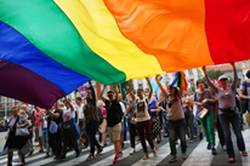 Pride in Social Work with Trans People? I recently came out as non-binary at work. I’d angsted at trans friends about the decision and tried to ignore the feeling of inauthenticity tickling at the back of my mind for longer than I’d like to admit. Then there was a Government leak stating that trans people would not be included in the ban on so called “conversion therapy”. I realised that the importance of visibility as a trans social worker within mental health services outweighed my discomfort at asking colleagues to change the language they used about me and to maybe consider the existence of gender outside of a binary. So what took me so long? The UK is an increasingly dangerous place to be trans. A 2020 Galop survey found that transphobic hate crime had doubled in the last three years, and that was only hate crime that was reported to police. The survey also found that only one in seven people felt able to report incidents of transphobia. In 2021 the Council of Europe Committee on Equality and Non-Discrimination published a report condemning “the extensive and often virulent attacks on the rights of LGBTI people for several years” in Hungary, Poland, the Russian Federation, Turkey and the United Kingdom (Ben Chikha, 2021:2). The report warned that the rights of trans and non-binary people are being rolled back in the UK leading to human rights issues, and that this is being propagated by politicians and others in positions of power. I’m in a position of privilege and relative power, but I can’t ignore this context. And unlike when being open about other aspects of my identity, I couldn’t be certain of support from my social work community. Are trans rights a social work concern? We are in the midst of a moral panic that seeks to position the rights of trans people, particularly trans women, in opposition to the rights of children and cis women (Pearce et. al, 2020). Transphobic articles published by major UK newspapers and broadcasters portray trans people as sexual predators and pathologise trans people as deluded or mentally ill. A dip into the toxic morass of “Gender Critical” Twitter or a certain online forum for mothers could give the superficial impression that trans rights are a safeguarding issue. Given the current climate of polarised views and misinformation, and that research has demonstrated that social workers do not feel prepared by their training to work with trans people (Stevens, 2022), perhaps the lack of engagement around trans rights from (cis) social workers is understandable. However, trans rights are very much a social work concern. Trans rights are human rights. Promoting human rights and social justice is core to social work. It’s woven throughout our codes of ethics and professional standards. BASW’s 2021 position statement on social work with trans people was a welcome interruption to the social work silence on trans issues. It highlights that opposing the oppression, stigma, discrimination and abuse that trans people face is in keeping with the BASW code of ethics and the social work purpose to uphold human rights (BASW, 2021). Trans people face barriers to all forms of healthcare, have higher levels of self-harm and suicide, are more likely to be unemployed or in low wage jobs and more likely to face homelessness than the general population (Pearce et. al 2020, Galop 2020, McNeil et. al 2012). The 2021 Council of Europe report states that transphobia in the UK breaches Article 14 rights. In 2020 Women and Equalities Minister Liz Truss spoke about reforms to the Gender Recognition Act 2004, mistakenly conflating the provisions of the Act with enabling access to “single sex spaces”, saying that “appropriate checks and measures” need to be in place regarding who accesses these spaces. This poses questions about self-determination and Article 8 rights. Trans rights are your rights. Attempts to challenge or remove rights from trans and non-binary people also impact the rights of cis women, children and other members of the LGBTQ+ community. The main proponents of the “Gender Critical Movement” are predominantly white, middle class, affluent people in positions of power with platforms in the press, universities and parliament. This movement does not represent the interests of working class, racialised and/or minoritised people. The Bell & Anor v. Tavistock & Portman NHS Foundation Trust case briefly (from initial judgement in 2020 until being overturned on appeal in 2021) set a judicial precedent that overrode Gillick Competence with potentially dire consequences for under 16s’ bodily autonomy. Let’s not forget that Gillick v West Norfolk and Wisbech Area Health Authority related to access to contraception. “Gender Critical” arguments against trans rights centre around biological essentialism, stating that women have “sex based rights” that must be protected (see Fair Play For Women, A Woman’s Place UK, etc., ad nauseam). Sex is presented as immutable. “Males” (incorrectly including trans women) are presented as stronger and biologically predisposed to sexual violence. “Females” are presented as fragile, vulnerable and in need of protection, reminiscent of outdated, misogynist notions of the ‘the weaker sex’ (Pearce et. al, 2020). Some “Gender Critical Feminists” go further to define womanhood by the ability to reproduce (e.g. Suzanne Moore in the Guardian, 2019), previously the preserve of anti-choice, fundamentalist religious organisations. Other “Gender Critical” groups state that exposing school children to information about gender and sexual identities (e.g. through the Stonewall School Champions programme) is a safeguarding concern, at times equated to grooming. As someone who attended school under section 28, this is uncomfortably familiar. What can social workers do?
Useful Web Links / Resources
Lizzie Furber (they/them) DCC-i Associate & mental health social worker June 2022 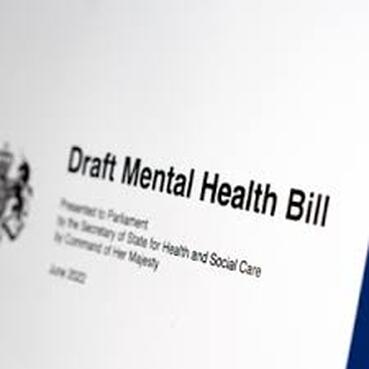 This piece was originally published in the DCC-i June 2022 Newsletter. So, the government will over the next year or so, draft legislation to reform the Mental Health Act (MHA). What is not to like? They intend to modernise the MHA & promise to make what is basically 1950’s legislation, fit for the 21st century. The plan is to give patients suffering from mental health conditions greater control over their treatment & to ensure that they receive the dignity & respect that they deserve. This new legislation is going to address the existing disparities in the use of the MHA for people from ethnic minorities. But it is going to keep CTOs #JustSayingLike. “In 2020-21, black people were four times more likely than white people to be detained under the Act, and over ten times more likely to be placed on a Community Treatment Order.” What is that all about then? What about us #AMHPs? Are we part of the problem or part of the solution? Can I suggest you read this summary by Mithran Samuel over at Community Care & the responses & make of it what you will. I am also not seeing any plan to do anything about poverty, inequality & substandard housing etc. You know the import stuff & Social Determinants of health & the cost-of-living crisis. They want to make it easier for people with learning disabilities & autism to be discharged from hospital. They are also amending the definition of mental disorder and the hope is, that adults and children with learning disabilities & autism, will not be detained in the first place. I applaud the intended consequences, but I do wonder about the investment in community provision & alternatives to hospitals & about the unintended consequences & about things like S.117. Be careful what you wish for, and it’s not just me, smarter people than me are wondering about this stuff also, see what the ever-learned and plain speaking Lucy Series has to say about it here. They are proposing to change the criteria needed to detain people so that the MHA is only used when it is strictly necessary. When the person is thought to be a genuine risk to their own safety or that of others & they are introducing the notion of therapeutic benefit. So, adults and children will in theory, only be detained when it is thought to be of therapeutic benefit to them. A certain contested diagnosis springs to mind & something about having capacity & about taking responsibility. Just think about that for a minute, about what that means in practice. I don’t think sending people/children 100’s of miles away to out of area beds is a therapeutic thing. Plus who gets to decide/assess what genuine or substantial risk is? I suspect that is you & me #AMHPlife & a doctor or two. If you can find a S.12 medic in the dark of the night. I don’t ever speak to any #AMHPs, or indeed doctors, who currently think that they are detaining people/children when it is not strictly necessary. I do speak to #AMHPs & Drs & families who acknowledge that they are detaining people/children because there is no other option or alternative available to safely manage/contain risk. Imagine you or I don’t detain someone, because we don’t think there is avtherapeutic benefit & it all goes wrong. I am not sure that I am looking forward to explaining that particular decision (made without the benefit of hindsight & with limited information & under pressure) in the criminal or coroner’s court. There will be more advocacy for people & the Nearest Relative will become a Nominated Person & they will have greater powers to say no & to be consulted about things like CTOs. Who is funding & providing that advocacy? What does it look like in the real world? What if the person doesn’t nominate a person? What if the Nominated Person just says no & no & thrice no & they are not helpful & you think they are unreasonable or unsuitable? Those really ill people in HMPs will be transferred to hospitals within 28 days. *If there is a bed. There will be a new form of supervised community discharge, that will allow us to deprive people of their liberty. But only the really risky ones. Remember the MM & PJ cases tell us, that we cannot use the provisions of the MHA (S.7, S.17A or S.41) to deprive capacious community patients of their liberty, even if they are assessed & thought to be really v risky to self or others. What is that going to look & feel like in the real world? People subject to the provisions of the MHA, will be able to appeal to Tribunals more often & they will be given a statutory care & treatment plan. This plan will be written with them & will set out a clear pathway to their discharge. Some plan that, & of course it will do away with S.117 disputes & funding panels & CHC & CCG squabbles over £s & provide housing with the appropriate level of support & sort benefits & deal with the DWP. It seems that the proposed & much discussed extension of Section 5 holding powers to the Emergency Department (ED), is not going to be a thing. The solution to the problem of adults/children being assessed as requiring admission, but there being no bed/hospital willing to accept the #AMHP application, is I was told, going a be none legislative one. I didn’t quite figure out what that answer meant or might look like in a police custody block, when the PACE clock has ticked & tocked. Other than an ever-increasing number of S.136s & other improvised solutions to system dysfunction. It is at this point that I usually mention S.140 anyone? Did I mention that me & Steve Baker our #CrewCop do joint training for #AMHPs & the girls & boys in blue & the odd Bed Manager? Last year (1920/21) in England there were 53,239 civil detentions under the MHA & something like 1,520 new restricted patients admitted to hospital for treatment. It is not 53,239 people by the way. It probably equates to about c.35,000 people & it doesn’t include people detained on S.136. - complicated this isn’t it? While like many, I really do appreciate the work undertaken by Sir Simon Wessely & his team & the MHA really did need updating & I enjoyed v muchly the odd train trip (consultation event). I can’t help but think (unfortunately, I am old enough & was an ASW in 2007), that it is again a missed opportunity to bring about real change. That the problems are not really rooted in the legislation. That it really is about the other stuff - poverty, inequality & substandard housing. About the lack of investment in the community alternatives & early intervention. If we really want to reduce the numbers of adults and children being detained, then we need to stop calling #AMHPs & we need to stop relying on the MHA as the solution to the problem. We do need to think about risk & perception of risk in a different way & we need to support people & families much better. Otherwise, I fear, that me & others, will simply be writing things like substantial & genuine risk on pink forms & writing that it is of therapeutic benefit & that LD dudes & autistic people will attract another diagnosis. I hope that I am wrong. I fear that I might be right #AMHPlife. Tony Deane Principal Social Worker & #GrumpyAMHP @asifAMHP
Daisy Jackson-Bogg is a member of the British Association of Social Workers (BASW), an independent social worker and Director of DCC-I, an independent social work consultancy and Continuing Professional Development (CPD) organisation. Daisy is a practicing Approved Mental Health Professional and Best Interest Assessor, undertaking independent assessments and Serious Adults Reviews work alongside developing and delivering CPD for the health and social care sector.
Is it important to, or important for? A key question in strengths-based practice, an approach which is upfront and central in the part of the profession I occupy, adults and mental health. This is a question I can ask, and know to ask, because of the influence of the Human Rights Act. Without it, social workers, independent or otherwise (along with other health, social care and public sector colleagues), would still be making unilateral decisions based on what they believed was most likely to keep people safe, guided by what the moral majority thought was best (translated at points in our history as almost ‘warehousing’ people who didn’t fit the norm or who were seen as broken, weak or less than, those who were seen as not being able to ‘make a contribution’ to the society in which they live. Whilst I agree in general terms that safety is a positive and important aspect of both civil life and specifically social work practice within that. I also recognise that it is a subjective term, one that varies according to the individual, context, and choices available. There is a balance to be struck between what society believes is best, and what the individual may want and/or need, and this is the position that adult social workers occupy on a daily basis. For many of the people we work with, their view of the world is not the same as our perceptions as workers, or our health colleagues’ perceptions, or the perceptions of the wider society (including the press at some points!). We know that one persons’ safety can be another person’s worst fear, and without a framework to underpin our decision-making, social work responses would have no benchmark, no consistent way of navigating thorny dilemmas and would likely have limited consistency – based on the issue, the context, the players involved and the values of the practitioner rather than a sense of fairness, respect, equity, dignity and autonomy (aka the FREDA principles, the key principles that underpin social work practice overall). While many would argue this is the case anyway (which I can’t deny in general terms, we don’t always get it right and people are not always acting with positive intent), what I believe we do have is a common understanding of how the state should support its citizens, and a mandate which requires us, as professional social workers, to intervene and challenge when individual or community rights are being interfered with or otherwise eroded. For me the Act is the authority that the profession rests, and relies upon, to deliver both our statutory and non-statutory duties, often without knowing that this is the case. For me, social work sits on that boundary between the benefit of the many versus the benefit of the few / individual. We are both advocates for individual rights and, in some cases custodians of both individual and public safety. It’s a sharp double edge sword that we walk on, and for me, the Act is the constant that leads us through some thorny ethical dilemmas we (and the people we support) are faced with, often whilst managing conflicting demands, shocking resource deficiencies and subjective interpretations of need and risk. As an AMHP and BIA it is the cornerstone of practice, the very reason my role exists, it is the roots of professional social work practice, ever present but not always noticed. Daisy Jackson-Bogg 8th December 2021 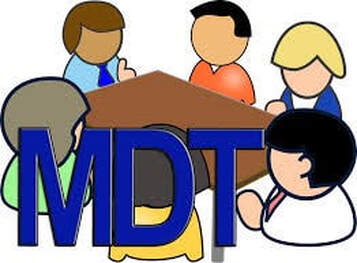 MDT are 3 letters (words) that I suspect many of us are very familiar with – Multi Disciplinary Team – but what do we mean? For me it raises more questions than answers, things like -
The aim of MDT working, is to bring together the skills & experience & expertise of all those involved & required to the table, in order to formulate (care plan) & support the person & family in their care. I would suggest that intuitively we think this should be a good idea & positive & be helpful & there is probably lots of evidence out there that it works when it works. The problem I guess is that all too often it just doesn’t! 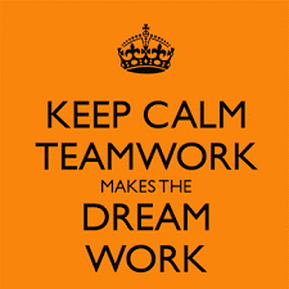 The state invests a fair few £s in training various professionals to undertake various roles & functions & some even become experts. I will mostly put the expert conversation & the one about student tuition fees & loans to one side. When I went to Polytechnic, I was young, had hair & was slimer… it was also free & I had a full grant & I had grand notions & hopes relating to concepts & theories about social mobility & social science stuff. I was pretentious & spotty enough to read Marx & developed ideas above my station, in relation to poverty, inequality & shite housing etc. I also played rugby & drank lots of beer & missed the odd train here & there. I always preferred being part of a rugby team than any MDT. I even managed to merge the two, and did an ethnography participant observation study based on a rugby tour. Young drunk men make very unwise decisions & I am glad mobile smart phones were not a thing. The MDT is also about assessing & seeking to manage & mitigate risk & sometimes about public protection. Over the years as a social worker, ASW, AMHP & BIA, I have worked in a number of services/teams: AOT, Rehab & Recovery, Forensic Services, Homeless CMHT, CMHT & dedicated AMHP Team. When I look back over that, I think it is clear, that the MDT sort of works for us as professionals. I also think it’s clear that the good Dr (Consultant Psychiatrist), is very often the captain of the team. The Team Manger tends to be the coach. The other professionals had demarcated roles & didn’t always agree with the captain or manager or indeed with each other. Depending on the set up, you might have a couple of junior doctors, a sprinkling of CPNs, an OT, a social worker, perhaps a Psychologist & trainee - if you were really lucky. The good Dr would tend to have a medical secretary, the MDT would have had admin support & there might be a number of associate support staff e.g., a nursing or social work or even OT assistant – to do the practical doing tasks.
I think MDTs work best, when they can tolerate robust & frank exchanges of views & when the culture & relationships & professionals involved can tolerate dissent & dissonance. Ward rounds are an interesting variation on the MDT theme & I suspect that the person in question or their family when invited to attend, don’t very often feel a part of the team. In terms of AMHP practice, I often find myself wondering what the MDT looks like. When I see a referral for a Mental Health Act Assessment (MHAA) from a CMHT Responsible Clinician (RC), I often find myself wondering what went on before & what role they intend to play in the MHAA?
The AMHP might sometimes need an officer of the law or 3 to join the team, & that is easier said than done. The girls & boys in blue are very busy fighting crime & this is about health. Yup that is very true officer, but I don’t actually work for health & the power & authority in the warrant is actually that of a constable & not mine - I am only an AMHP.
I am not convinced that the ambo crew feel like that are part of the team & sometimes it feels like the Bed Manager is playing for the opposition team. I sometimes find myself wondering who is actually obstructing the AMHP (S.129)? Then there is the mythical S.140 & the CCG to be thinking about. They appear to be on the subs bench, but are not overly keen on getting on to the pitch. #AMHPs are not in #Team999- AMHPs don’t get cars with go faster stripes or flashing blue lights. No one ever thinks where the AMHP might park or about the AMHP on the bus. The AMHP gets a Jones & a mobile phone & is left to crack on & moan. The #AMHPwinge is a thing… So, the AMHP gets a Dr or two & maybe if they a are lucky, a Crisis Resolution Home Treatment nurse, but with no bed available the AMHP is left to mind the gap. The team is then very often me & thee & the family. The people, kids & families on the receiving end of what AMHPs do, very often form part of the team. The vast majority of people actually cooperate & acquiesce with the AMHP & the process. But I suspect that it doesn’t feel like team work or dream work. It is all too often an improvised solution to system dysfunction. Anyway less of my #AMHPwaffle & here is what some others thought.
So, a little bit of an #AMHPrant & some thoughts on the MDT & what it might mean to me & thee. Tony Deane (@asifAMHP) Principal Social Worker & #NotsogrumpyAMHP 29th November 2021
This week one of our directors, Daisy Jackson-Bogg, took part in a webinar, organised by Siobhan McLean and co, at Kirwin McLean & Associates to celebrate (yes we meant celebrate) world menopause day 2021. We are sure there are loads she has missed which others may have included, but as the Social Work Connect event highlighted, the experience of menopause is different for different women.
I was summonsed (invited) to Brighton by @SteveyBMH aka the now retired National Mental Health Co-ordinator @CollegeofPolice Steve is a tip top fella & this was his gig & final hurrah. Steve is/was very clear, that the girls & boys in blue, should not be the first line of response to people experiencing mental health crisis. However the reality is, that far too often, the girls & boys in blue #Team999 & the almost ubiquitous S.136, are the only response on offer. I have been to a couple of these conferences now & to be fair, the girls & boys in blue really do appear to get it. They now know what an #AMHP is & does. They mostly know that the “P” stands for “Professional”. They know that the #AMHP has to find a S.12 Dr or 2 & that the #AMHP doesn’t do beds. They know all about S.140 & that NHS compliance with this particular section of the MHA, is part of the solution. Most of them now know, that S.136 is actually an arrest (preserved power of & not for an offence). They know that coordinating a Mental Health Act Assessment in custody, too often represents a huge challenge for #AMHPs & they also know that we #AMHPs probably need somewhere to park. They, like you & @seandilleyNEWS, also know (see article here), that the mental health system is dysfunctional & struggles to meet the demands placed on it. They acknowledge that they are sometimes placed between a rock & a hard place & they know who is actually placing them in that position. The big cheese @DCCRachelBacon certainly appears to understand her brief & she is being ably supported by @BenjaminRoweso1 & Tony Jarred (needs to join @Twitter soon) @metpoliceuk. It isn’t very often, that a wee boy from Derry, gets to sit next to a Deputy Chief Constable. It struck me as I listened & wandered about the very posh Grand Hotel, just how much these girls & boys in blue cared about this stuff. Police Forces from up & down the country, from over Hadrian’s Wall, from the Valleys & the PNSI were represented & they are all trying to do this stuff better. They are all trying to make multi agency partnership working, actually work. So I stood up & did the A to Z of #AMHPing. I banged on about the need for better legal literacy & suggested that people actually need to read the MHA & the MHA Code of Practice & probably the MCA.
I might have suggested that the girls & boys in blue need more training in mental health. (but to be fair, the boss pays me to say that 😉)
|
AuthorSNews, views and rambling rants from the DCC-i Crew... Archives
September 2022
Categories
All
|
|
DCC Interactive Ltd
Registered Office: 22 St John St, Newport Pagnell. MK16 8HJ Registered in England & Wales, Registration No: 13075266 Contact: [email protected] Registered with the Information Commissioners Officer, Registration No: ZA839281.
|
Our Accreditations: |


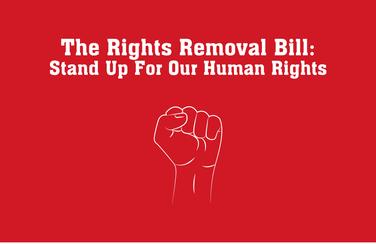
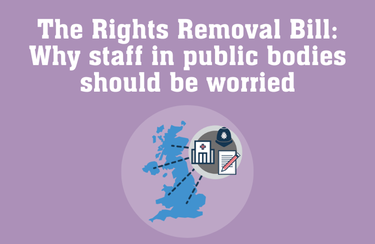
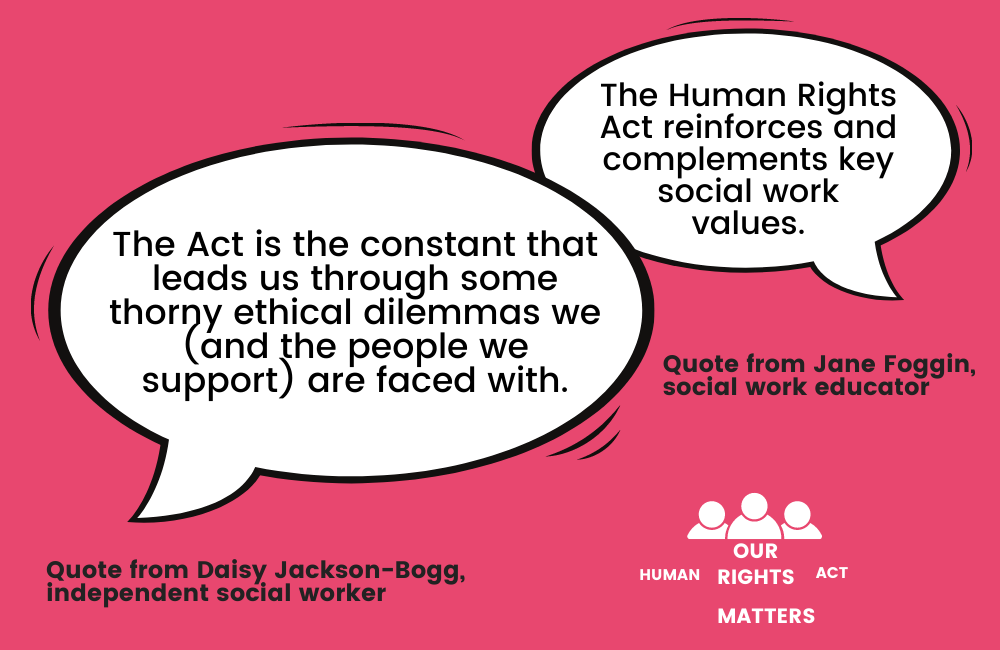
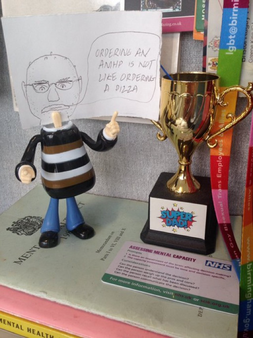
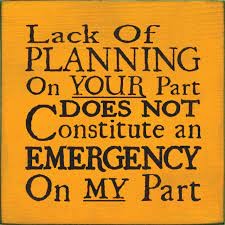
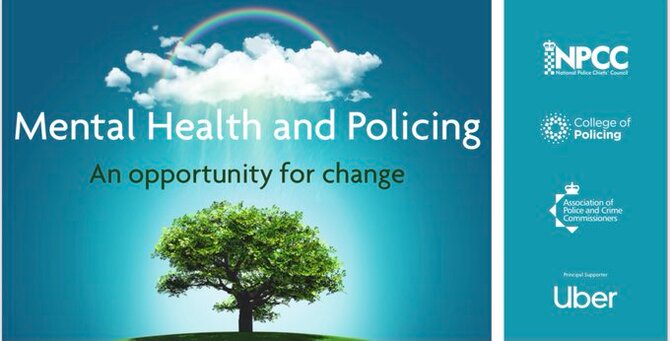
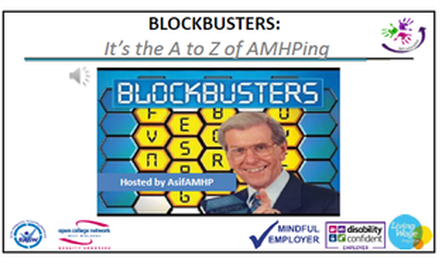


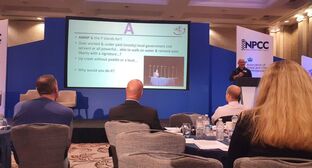
 RSS Feed
RSS Feed





